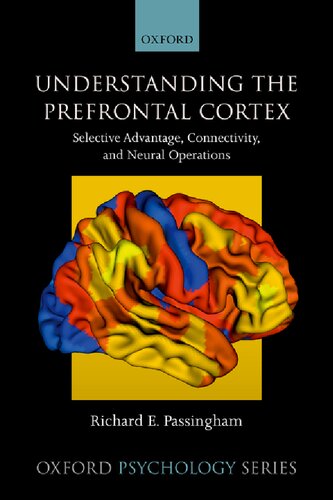درک قشر پیشانی: ویژگی انتخابی، اتصال و فرآیندهای عصبی ۲۰۲۱
Understanding the Prefrontal Cortex: Selective Advantage, Connectivity, and Neural Operations 2021
دانلود کتاب درک قشر پیشانی: ویژگی انتخابی، اتصال و فرآیندهای عصبی ۲۰۲۱ (Understanding the Prefrontal Cortex: Selective Advantage, Connectivity, and Neural Operations 2021) با لینک مستقیم و فرمت pdf (پی دی اف)
| نویسنده |
Richard Passingham |
|---|
| تعداد صفحهها |
490 |
|---|---|
| نوع فایل |
|
| حجم |
54 Mb |
| سال انتشار |
2021 |
89,000 تومان
معرفی کتاب درک قشر پیشانی: ویژگی انتخابی، اتصال و فرآیندهای عصبی ۲۰۲۱
جانشین نوروبیولوژی تثبیت شده قشر جلوی مغز، درک قشر جلوی مغز، مطالعه دقیقی از اتصالات آناتومیک در این ناحیه مغز ارائه می دهد، و نشان می دهد که چگونه هر منطقه و زیر منطقه مغز دارای الگوی منحصر به فردی از اتصالات است، و به بررسی
تحولی که این منطقه ایجاد می کند – از ورودی ها به خروجی های آن.
کتاب با دو فصل از مطالب پایه آغاز می شود، قبل از اینکه به پنج بخش فرعی قشر جلوی مغز توجه شود و تحول انجام شده توسط هر کدام را در نظر بگیرد. سپس به چگونگی تعامل قشر جلوی مغز با بقیه مغز، از جمله نه تنها نواحی قشر مغز، بلکه همچنین مناطق زیر قشری مانند عقده های قاعده ای و مخچه می پردازد.
کتاب با بخش پایانی پایان می یابد که در آن این اصول برای مغز انسان اعمال می شود. او با بحث در مورد گسترش قشر جلوی مغز در طول تکامل انسان شروع می کند. سپس بررسی می کند که چگونه مغز انسان ممکن است مکانیسم هایی را انتخاب کرده باشد که در اجداد نخستی های ما وجود داشته است، و با ارائه
ورودی های جدید، این مکانیسم ها را برای حمایت از تفکر، یادآوری وقایع از گذشته های دور، تصور وقایع در آینده ی دور گسترش می دهد. احساس خود، زبان، و توانایی درک حالات ذهنی، به دیگران و توانایی همکاری و یادگیری قوانین اجتماعی و اخلاقی.
این کتاب که توسط یک دانشمند برجسته مغز نوشته شده است، سهم مهم و تاثیرگذاری در ادبیات علوم اعصاب خواهد بود.
transformation that this area performs - from its inputs to it outputs.
The book starts with two chapters of foundational material, before considering five subdivisions of the prefrontal cortex, and looking at the transformation that each one performs. Next it considers how the prefrontal cortex interacts with the rest of the brain, including not only cortical areas but
also subcortical areas such as the basal ganglia and cerebellum.
The book ends with a final section in which these principles are applied to the human brain. It starts by discussing the expansion of the prefrontal cortex during human evolution. It then considers how the human brain has co-opted mechanisms that existed in our primate ancestors, and by providing
new inputs had extended them so as to support reasoning, remembering events from the distant past and imagining events in the distant future, the sense of self, language, the ability to understand the mental states of others, and the ability to cooperate and learn social and moral rules.
Written by a leading brain scientist, the book will be an important and influential contribution to the neuroscience literature.



